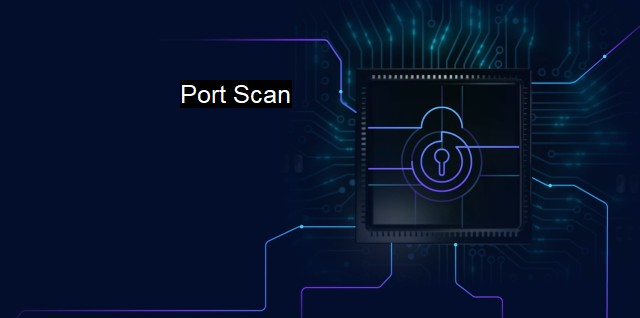What is Port Scan?
Understanding the Threat of Port Scans: A Comprehensive Guide to Cybersecurity Risks and Antivirus Solutions
'port scan' is a term that every IT professional, network administrator, or cybersecurity specialist should be familiar with. Dealing with the escalating horizon of potential cyber threats requires an understanding of threats not only at a high level but also at the operational level. One such fundamental concept pertaining to internet protocol and cybersecurity networks is Port Scanning.A port scan is an inspection method where cyber specialists and computers identify open ports or network entry points accessible on a host network, such as a home computer or business network system. The name is based on the maritime concept of 'port', as it serves as a similar docking point for network data and information. This particular process is necessary for understanding weak points within a system and building proper defenses against potential intruders and threats. Usually, these open ports act as communication endpoints facilitating the interchange of network services and the transfer of data packets.
Performing a port scan is considered a precedential step and an essential part of ensuring network security because the scanning process determines which ports are open and eligible for communication. the same operation can be a dual-edged sword. Cyber attackers also employ port scanning techniques to find vulnerabilities in a network or system they can exploit, just as cybersecurity professionals utilize them for defense and system oversight.
For a safer understanding, think of ports on the network as doors in a building. At the point where a door is open, there's a possible entry for the outsider. Consequently, port scanning can be viewed as examining these doors to identify the ones left ajar that may potentially allow malicious cyber invaders to infiltrate a safe domain.
Typically, port scanning can be divided into different types, including SYN scanning, UDP scanning, ACK scanning, Window scanning, and FIN scanning amongst the most popular ones. Each of these types possesses different working principles and patterns, thereby assisting in various objectives and vulnerabilities.
For instance, UDP scanning is one method and centers on sending UDP packets to various target ports. Due to dependencies in network firewalls and system complexities, responses may fluctuate between open and closed ports. TCP scanning, on the other hand, operates a three-way handshake to develop a communication connection. It then determines the open ports based on whether the target port accepts or denies the connection.
a poor understanding and negligent use can lead to misuse of port scans, as they can provide cyber attackers with information and make a system more vulnerable to attacks. Herein lends the role of an antivirus. Antivirus applications play dual functions in the port scanning scenario: deterring scan attacks and initiating protective scans.
On the one hand, antivirus software serves to safeguard computers by scrutinizing and regulating entering data, which includes detecting potential port scanning attacks. These vulnerabilities are identified by actively monitoring network traffic to discover unconventional port activities that showcase signs of an active port scanning attack.
On the other hand, some antivirus solutions perform port scans as part of their protective and preventive measures. From the users' standpoint, this antivirus scan checks to ensure no malware is trying to misuse their system by opening random unrequested ports.
Despite the protection offered by antivirus programs, individual understanding and timely scrutiny are essential. Users and network administrators should keep tabs on their system's network activities to maintain an ongoing awareness of their online activities and any potential threats to their system's security.
Port scanning is an integral concept transforming into a tool and threat, depending upon the user's motives and awareness. It's both a process that sustains network security and a vulnerability that potentially exposes the network to attacks. Therein, a sound understanding of port scanning, coupled with the right use of antivirus solutions, ensures a safer internet operating environment.

Port Scan FAQs
What is a port scan and why is it important in cybersecurity?
A port scan is a process of examining a machine or network for open ports. It's important in cybersecurity because attackers often use port scans to find vulnerabilities and gain unauthorized access to a network.How does an antivirus program detect and block port scans?
Antivirus programs detect and block port scans by monitoring network traffic, looking for patterns and behaviors that are indicative of a port scan. If a scan is detected, the antivirus program can block the IP address of the attacker or close the open ports on the network.What are the consequences of a successful port scan?
The consequences of a successful port scan can be severe. It can lead to unauthorized access to a network, data theft, and malware infections. A successful port scan can also be used as a precursor to more advanced attacks, such as DDoS attacks or ransomware.What are some best practices for protecting against port scans?
Some best practices for protecting against port scans include closing unnecessary ports, using firewalls and intrusion detection systems, keeping software and security patches up to date, and implementing strong passwords and other access controls. Regular network scanning and testing can also help identify vulnerabilities and prevent attacks.| | A | | | B | | | C | | | D | | | E | | | F | | | G | | | H | | | I | | | J | | | K | | | L | | | M | |
| | N | | | O | | | P | | | Q | | | R | | | S | | | T | | | U | | | V | | | W | | | X | | | Y | | | Z | |
| | 1 | | | 2 | | | 3 | | | 4 | | | 7 | | | 8 | | |||||||